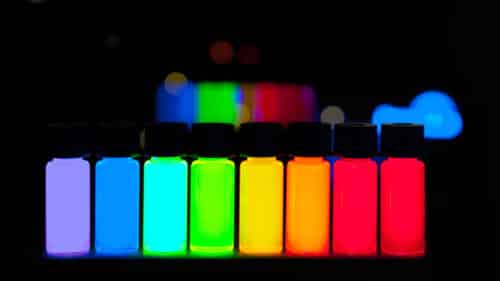These semiconductor nanocrystals have photo-physical properties that can reproduce daylight conditions.
Quantum Dots(QDs) have been studied since the 1990s as a light source. They possess optoelectronic properties therefore showcasing excellent colour performance with high colour rendering capabilities.

The researchers at the University of Cambridge have designed the next-generation smart lighting system using a combination of nanotechnology, colour science, advanced computational methods, electronics and a unique fabrication process. They were able to reproduce daylight conditions using more than three primary colours used in typical LEDs.
People prefer visual comfort, whether it be a design of a product or a workspace. Visual comfort is achieved when the vicinity has a good natural or artificial light source and some good glare control. An object’s colour is determined by illumination and that is what we require.
Researchers at Cambridge have developed an architecture for quantum-dot light-emitting-diode (QD-LED) based next-generation smart white light system. They combined system-level colour optimization, device-level optoelectronic simulation, and material-level parameter extraction.
The system consists of a computational design framework used from a colour optimization algorithm used for neural networks in machine learning in addition to a new method for charge transport and light emission modelling.
The QD-LED showed a correlated colour temperature (CCT) range from 2243K (reddish) to 9207K (bright midday sun), which is far more than the current state-of-art technology. These quantum dots are of a specific size – between three and 30 nanometers in diameter –which allowed the researchers to overcome some of the practical limitations of LEDs and achieve the emission wavelengths they needed to test their predictions.
“This is a world-first: a fully optimized, high-performance quantum-dot-based smart white lighting system,” said Professor Jong Min Kim from Cambridge’s Department of Engineering, who co-led the research. “The ability to better reproduce daylight through its varying colour spectrum dynamically in a single light is what we aimed for,” said Professor Gehan Amaratunga, who co-led the research.






